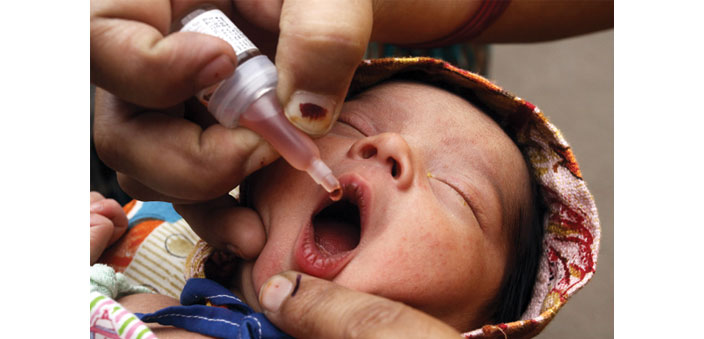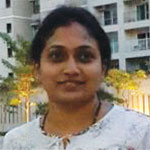Vaccinations are a boon to mankind, the invention of vaccination has led to the eradication of various life threatening diseases. Vaccinations are antigenic material injected to stimulate the immune response of an individual towards a disease. The first documented use of vaccination is from China and India in the 17th century. The powdered scab from infected people with small pox was used to produce immunity against small pox. With the invention of vaccine for smallpox and its implementation globally with the support of WHO (World Health Organisation), smallpox was completely eradicated, which was declared by WHO in 1980.
Understanding poliomyelitis
Poliomyelitis is another such disease that has to be eradicated. Poliomyelitis is an infectious disease caused by the Poliovirus. It is an RNA virus (Ribose nucleic acid) and there are three stereotypes of the virus poliovirus – type 1(PV1), PV2 and PV3. All the three types are extremely virulent and cause the same symptoms. The word poliomyelitis is derived from the Greek words poilios-grey and myelos-marrow and itis – inflammation, referring to the inflammation of the grey matter of the spinal cord.
Poliomyelitis is transmitted through the fecal-oral route by ingesting contaminated food or water and is the most common mode of transmission. The virus particles are excreted in the feces for several weeks following an infection. It is sometimes transmitted by the oral-oral route too. Poliomyelitis mainly affects children below five years of age.
The major symptoms caused by the poliovirus are paralysis causing muscle weakness and poor control over muscle. This happens when the virus enters the central nervous system. In severe cases, the virus can infect the brain tissue causing encephalitis, which leads to seizures and spastic paralysis. Once infected, there is no cure for the disease. About 2%-5% of children and 15%-30% of adults die of poliomyelitis.
Prevention is better when there is no cure
As it is well said “prevention is better than cure”, prevention against the disease is the only measure to minimise the damage caused by the disease, as once infected there is no cure for the disease. The incidence of the disease has decreased since the invention of vaccine against Poliomyelitis. The vaccine is available in two forms:
• IPV – Inactivated Polio Vaccine which is injected. It was developed by Jonas Salk in 1955 and is also known as the Salk vaccine.
• OPV – Oral Polio Vaccine is given orally by mouth, it was developed by Albert Sabin in 1961 and is known as Sabin vaccine.
The polio vaccination is given to an infant at 2nd month, 4th month, 6th -18th month and 4 years. The vaccine given is the IPV (Inactivated Polio Vaccine). Research showed that the three dose of the vaccine was not enough to protect the child against the poliovirus and the ministry of health and family welfare recommended eight to ten dose of the vaccine to provide immunity towards the disease. Hence, the pulse polio campaign was started by the government of India to provide mass vaccination to all the children below five years of age, even those residing in the remote areas, to eradicate poliomyelitis.
The use of these vaccinations has led to the decrease in the incidence of polio. The vaccine acts against all three types of poliovirus. In 1988, the WHO launched the Global Polio Eradication Initiative for worldwide eradication of poliomyelitis. By the effort of the WHO and other supporting organisations like UNICEF, Rotary International, Bill and Melinda Gate Foundation, the number of polio cases have fallen by 99%. Only two countries in the world – Pakistan and Afghanistan remain Polio endemic. In 1994 the WHO region of America was certified polio free, followed by the WHO western pacific region in 2000, WHO European region in 2002, WHO South East Asian region in 2014. The last polio case in India was reported in 2011. On March 27th 2014, India achieved this historic land mark and India was certified polio free.
The switch
Among the three types of the polio virus the type 2(PV2) has been completely eradicated and hence there is no need to incorporate the type 2 virus in the oral polio drops. So as a part of next stage, India along with the other countries of the world, is removing the type 2 virus strain from the polio drops, leaving the oral polio vaccine (OPV) with two types of polio viruses – type 1 and 2.
This switch on from topv (trivalent oral polio vaccine) to bopv (bivalent oral polio vaccine) is coordinated globally and in India The National Switch Day will be on 25 April 2016, when topv will be completely withdrawn and replaced by bopv, in both private and public sectors. Only bopv will be used after this switch in both routine immunisation and polio campaigns. The primary health care workers in the rural area and the pediatricians in the urban area are the two main important sectors involved in providing immunisation. Efforts are being made to create awareness among the healthcare providers about this switch on and to consider the surplus topv as biowaste and discard it accordingly. Communication with the health workers is in progress about the dangers associated with the continued use of topv.
While the oral polio vaccine is used for global eradication, its continued use is associated with the circulating vaccine-derived polio viruses (cVDPV) and sporadic occurrences of vaccine associated paralytic poliomyelitis (VAPP) cases. The inactivated polio vaccine does not cause cVDPV or VAPP, but has to be injected and is more expensive. Hence, the combined use of OPV and IPV schedule is more efficient in polio eradication.
Myths hindering complete eradication
Polio vaccine causes impotency in male children is a myth prevalent mostly in Pakistan. Polio virus should not be given to children when sick is another myth.
Overcoming such myths and hindrances, the world is fighting as one towards global eradication of poliomyelitis. India has achieved a landmark in eradicating poliomyelitis and is now proceeding to the next stage of switch on to bOPV from tOPV. India starts a new innings on the National Switch Day.


